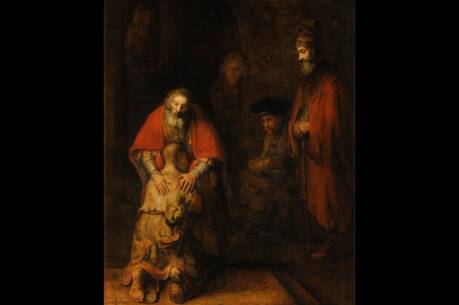Marriage and divorce: There is something bigger than both
To read the first reading from Genesis and then today’s Gospel from Mark is to experience a jolting whiplash. While the first reading vibrates a poetic union between the first human couple, the Gospel crashes with a straightforward debate on divorce and remarriage in the first-century C.E. Somewhere in the background of today’s passages hides the sacramental analogy that refers to the church as bride and Christ as her groom. Sunday’s readings invite the faithful to search their heart for the bigger picture when reflecting on the union of couples.
And the two of them become one flesh (Gn 2:24).
What sustains a marriage in today’s society?
What does a union between church and Christ look like in your faith community?
How is solitude distinct from loneliness?
The opening verse from today’s first reading introduces the human condition: “It is not good for the man to be alone. I will make a helper suited to him” (Gn 2:18). In God’s attempt to find a suitable companion for “the man” (not yet referred to as Adam in the narrative), the desire is to soften the existential threat of loneliness. The image is one of a parent who wishes their child to find peace in a world that can feel harsher when experienced alone. It is not good for anyone to be alone.
A remarkable thing happens with the shape of the text toward the end of the first reading. The passage shifts from prose to poetry: “This one, at last, is bone of my bones and flesh of my flesh; This one shall be called ‘woman,’ for out of man this one has been taken” (Gn 2:23). The meter and rhyme are clear from the Hebrew, especially with the last line, “this one will be called isha (wo-man) for out of ish (man) she was taken.” Why use poetry at this point in the text? Rather than dismiss this as a random bit of versification, we need to keep in mind that biblical poetry is the structure used to illuminate wonderful things. When “the man” finds his “this one,” it becomes a moment to be celebrated in the first poetic lines in the Bible. The impact is profound, as indicated in the last line of this first reading, “And the two become one flesh” (Gn 2:24).
Jesus will quote the above verse from Genesis in today’s Gospel. Before that he attempts to sway the accepted teaching that marriage may be dissolved when the couple faces difficulty. The Pharisees point to the place in the law that says it is lawful for a husband to release his wife. “Moses permitted him,” explain the Pharisees, “to write a bill of divorce and dismiss her” (Mk 10:4). They quote a passage (Dt 24:1-4) that speaks more about the technicalities of adultery on the part of a man who attempts to remarry his wife after publicly divorcing her. It also shows protection for the woman to have a legal document in her hands to secure her status in society.
In this ancient culture, whether Greco-Roman or Jewish, divorce seemed straightforward. Marriage was a contract between two families, not just two individuals. Sometimes, however, bitterness could linger indefinitely between the couple and, therefore, a man would release himself from their bond. In rare occasions the woman may have exercised the right to divorce too, but in practice it was seen as a right of the man. Jesus goes against this accepted practice and reminds the crowd that the married couple was meant to be seen as “one flesh” from the beginning.
Catholics hold on to a sacramental view of marriage as lifelong, which removes divorce as a viable option to dissolve the union. In reality, married Catholics still separate and may attempt to annul the marriage altogether, a rather involved and lengthy process.
Another way to think about this whole topic is to return to the ideal of marriage found in Genesis: that the two become one flesh. The goal of sacramental marriage is not just a lifelong commitment between the couple. Although this may be a remarkable feat, a couple could remain bitter until the end, which would distort the purpose of the union. The goal of marriage is union of hearts and minds so that the two individuals are no longer separated, but closer to “one flesh,” or one heart.
That is why the marriage analogy of the church as bride and Christ as groom works so well. The goal of the church is not just to stay with Christ in a lifelong relationship. The church is meant to become one with Christ, who happily becomes one with us. In other words, the analogy is God’s poetry for us.








